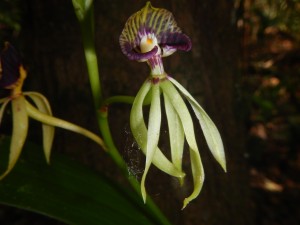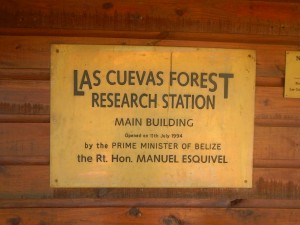Today we retrieved our vials and performed our largest experiment yet, which involved sorting through specimens and separating them into morphospecies. After presenting our findings to Adrienne and Scott, we realized that there are a ton of ways to analyze data and that we definitely didn’t use the best methods to present our findings. Another day, another learning experience.
After that, we had quite a few lectures lasting into the afternoon. We heard from Lauren, a graduate student that has been living at Las Cuevas since January. She is here trying to answer the question of why carnivores are present in the Chiquibul and thinks that human made trails and roads act as corridors for these species. She’s also one of those people that you instantly admire.
After our lectures, we went out on a night hike. It was quite entertaining. We were seeing insects and arachnids left and right. I could hear Adrienne and Michael screaming and yelling in the dark. We saw a lot of monkey hoppers, a few tarantulas, the largest spider I have ever seen, leaf cutter ants, massive walking sticks, a green caterpillar, and a coral snake (venomous!). Overall it was an exciting hike.
No bees again today, most likely because we were in the classroom all day. But I did set out some scents in a little cup near the forest edge. Maybe I’ll see something tomorrow.














